Bak Chang (Penang Hokkien: Bak1 Chang3 [baʔ-tsaŋ]), or meat dumpling in Hokkien, is one of the many different types of Chang, rice dumpling, eaten by the Chinese. The name chang and bakchang are almost interchangeable to refer to the meat dumpling. It is also some times called kiam chang, meaning savoury dumpling. In Mandarin, it is known as zong or zongzi. If the main ingredient is something other than meat, then that item is mentioned in the name, for example tau chang is bean dumpling, knie chang is rice dumpling with alkaline water (air abu). The filling of the bakchang includes meat - preferably fatty pork, shiitake mushroom, salted duck yolk and chestnut. These are encased in glutinous rice and then wrapped with bamboo leaves to form a tetrahedral dumpling, which is held together by tying with hemp string.
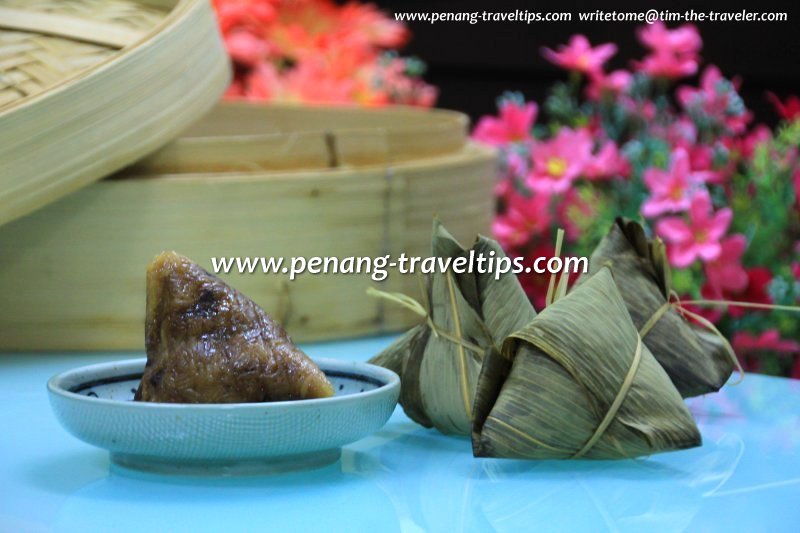 My mother-in-law's bakchang (4 April 2013)
My mother-in-law's bakchang (4 April 2013)
Bak Chang Recipe
My wife learns to make bak chang from her mother. Here is her bak chang recipe, if you wish to make it yourself.The History of Bak Chang
The eating of bakchang is part of the Duanwu Jie Festival, which we refer to in English as the Dragon Boat Festival. The name Dragon Boat Festival, however, is not precise, as it refers to just one of the activities that takes place during the Duanwu Jie Festival. A more correct translation would be the "Solar Maximus Festival" or "Summer Solstice Festival". This is because Duanwu Jie takes place during the longest day of the year, which according to the Chinese lunar calendar, takes place on the 5th day of the 5th moon in the northern hemisphere.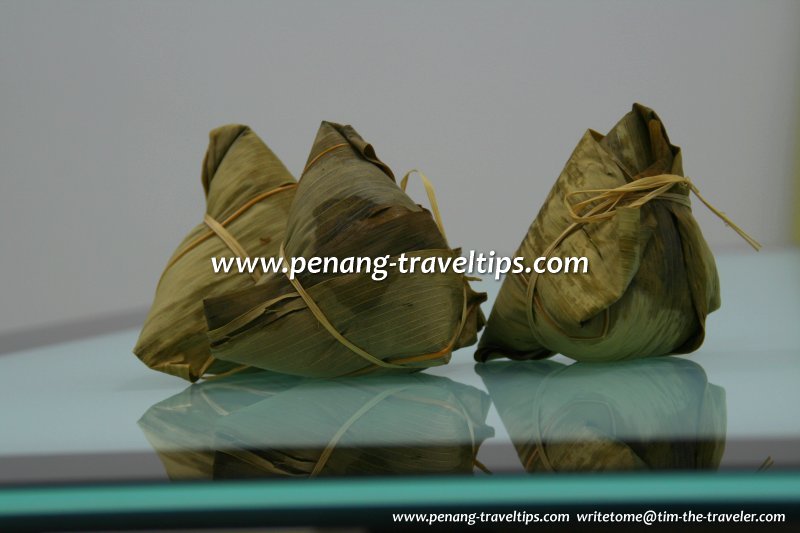 Bak Chang (16 August 2008)
Bak Chang (16 August 2008)
The Duanwu Jie Festival commemorates the death of Zhou Dynasty poet Qu Yuan (circa 340 BC - 278 BC), who committed suicide by leaped into the Milou River, located in northeastern Hunan Province in modern-day China. This happened during the Warring States Period in Chinese history, in the ancient state of Chu.
Qu Yuan was a minister in the Chu government. The king of Chu had formed an alliance with the increasingly powerful state of Qin. Qu Yuan had opposed the alliance. He advocated an alliance with other neighbouring states to restrain Qin domination. To quash the opposition, the king banished Qu Yuan.
While in exile, Qu Yuan wrote some of the greatest poetry in Chinese literature. In 278 BC, Ying, the capital of the state of Chu, was captured by General Bai Qi of the state of Qin. In despair, Qu Yuan committed ritual suicide by wading into the Milou River holding a heavy rock which (I add) he tied to himself.
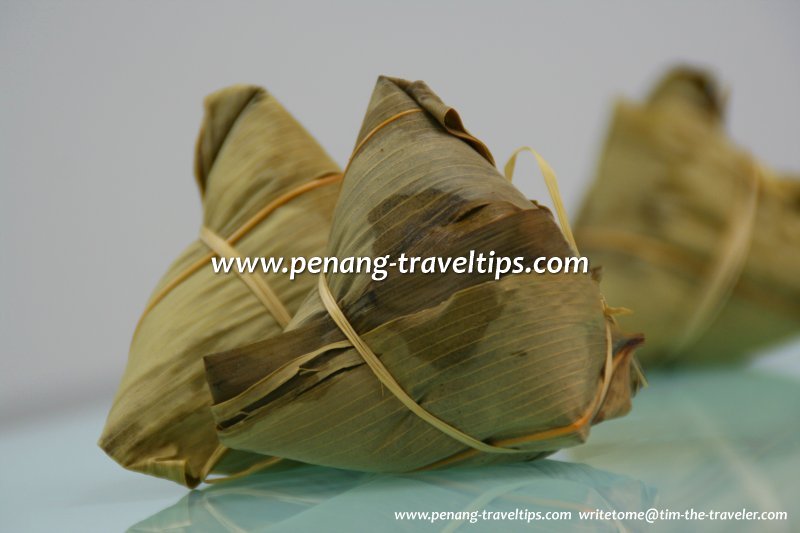 Bak Chang (16 August 2008)
Bak Chang (16 August 2008)
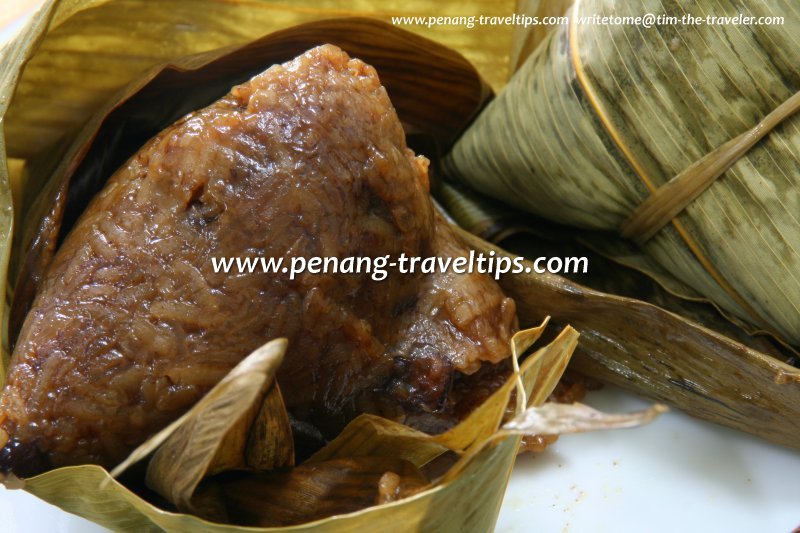 Bak Chang (16 August 2008)
Bak Chang (16 August 2008)
Villagers seeing his action tried to save him. They raced into the river on boats, beating drums and splashing the water with their paddles to scare away the fish. They also threw rice into the river so that the fish will eat the rice and not attack Qu Yuan.
But all was in vain, as Qu Yuan's remains were lost in the river. However, late in the night, Qu Yuan's spirit was said to have appeared before his friends. He told them to drop rice dumplings into the river to ward off a river dragon.
His friends fashioned rice dumplings wrapped in silk and dropped them into the river. The act formed the basis of making and eating bakchang on the 5th day of the 5th lunar month, while the act of racing down the river in search of Qu Yuan's body brought us the Dragon Boat Festival.
Where to buy Bak Chang
- Adrian Goh recommended the chang on Burmah Road at junction with Tavoy Road, on 22 October, 2019.

The following food map makes it incredibly easy for you to find all the location where bakchang is sold. Of course there is more, and I shall add to it as I discover them.
Where to find stalls selling Bakchang in Penang
My mother-in-law's bak chang
All the bak chang on this page are made by my mother-in-law who makes in every now and then on special occasions.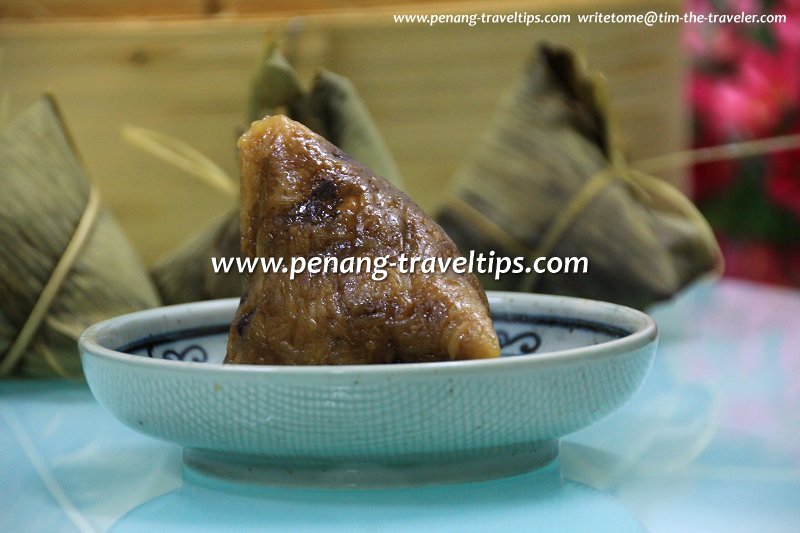 My mother-in-law's bakchang (4 April 2013)
My mother-in-law's bakchang (4 April 2013)
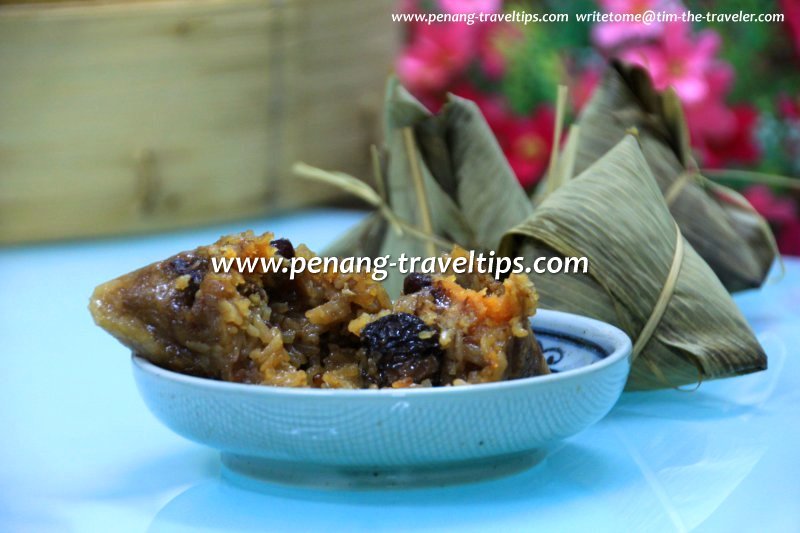 My mother-in-law's bakchang (4 April 2013)
My mother-in-law's bakchang (4 April 2013)
 Copyright © 2003-2025 Timothy Tye. All Rights Reserved.
Copyright © 2003-2025 Timothy Tye. All Rights Reserved.
Copyright © 2003-2025 Timothy Tye. All Rights Reserved.

 Go Back
Go Back

